There are some questions that arise when sowing potatoes, like “How far apart should I plant potatoes?“, the right sorts of soil and organic fertilizer to use, and others. In order to increase yield and reduce resource waste, home potato cultivation requires you to understand gardening techniques.
This article will explain the four planting techniques for potatoes you should be familiar with, the variety-specific spacing guidelines and recommendations for your potato plants, as well as a few tips for curing your harvest. So let’s ride on.
Contents
How Far Should I Plant Potatoes: 2 Main Options
When growing potatoes usually in early spring, the spacing will depend on the type you are planting. The spacing between seed potatoes can vary based on personal preferences, growing conditions, and garden beds and layout. Here are some common requirements for spacing large and smaller potato seeds varieties:
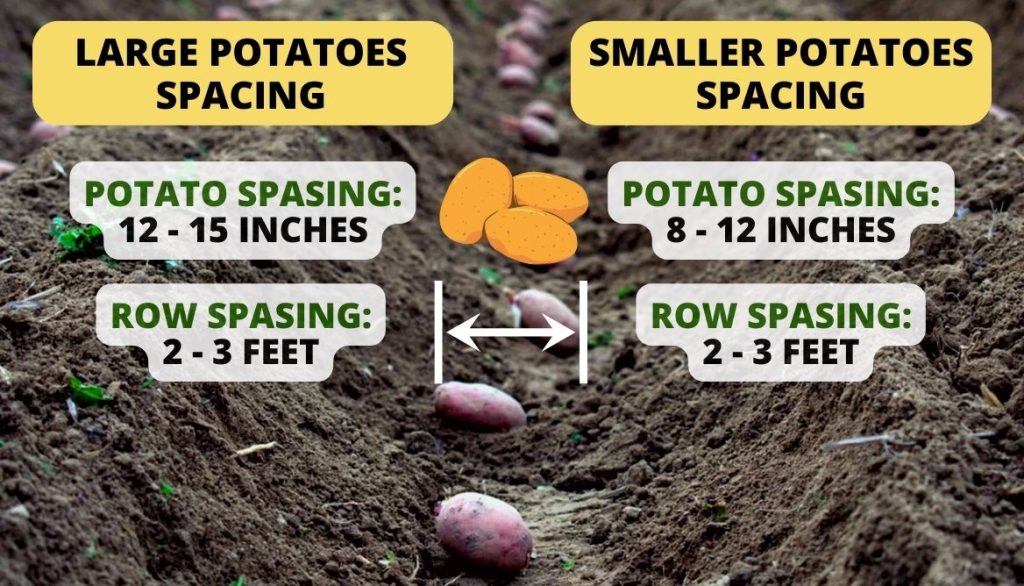
1. Large Potato Spacing
For large seed potatoes kinds, it is advised that you plant potatoes in rows at a distance of 12 to 15 inches. You will need to space the rows about 2 to 3 feet apart.
2. Smaller Potatoes Spacing
When growing smaller potato seeds or only baby potatoes, you can plant them closer together than you would plant larger potatoes. You can plant smaller kinds in rows, spaced roughly 8 to 12 inches apart. Similarly, you should space rows about 2 to 3 feet apart.
This table provides examples of both large and small potato varieties:
Larger-sized Potatoes | Smaller-sized Potatoes |
Russet Burbank | Red Norland |
Yukon Gold | Fingerling Potatoes |
Kennebec | Charlotte |
Maris Piper | Baby Boomer |
King Edward | French Fingerling |
Planting Potatoes Far Apart – Recommended Space for Different Gardens
Let’s take a look at the specifics of potato planting depending on your available space:
1. Square Foot Gardens
You can plant potatoes in a grid arrangement using square-foot gardening. By employing this technique, you may make the most of the area in your yard. There is close spacing within the square foot grid with each seed potato having around 6 inches distance from the other.
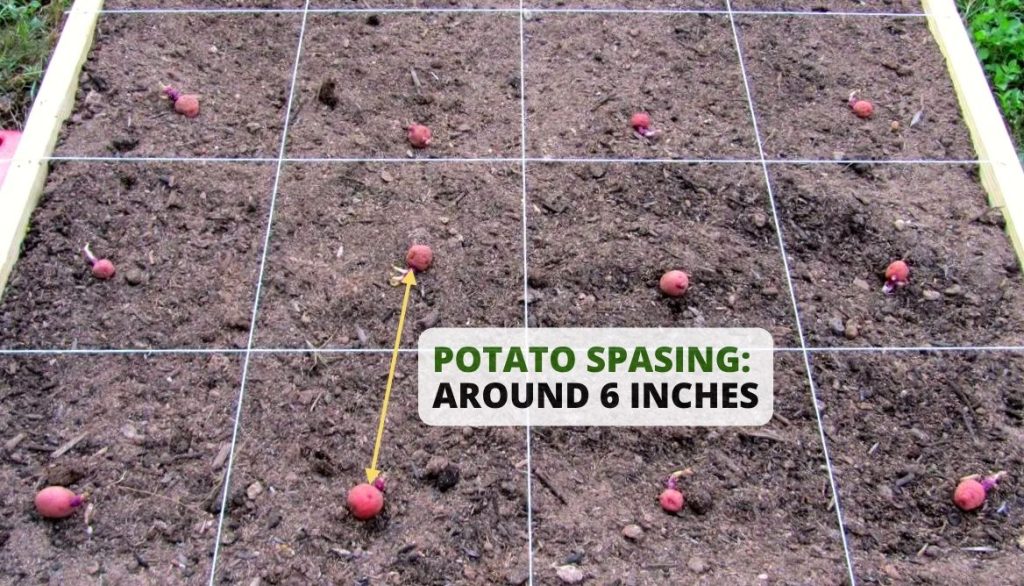
2. In-Ground Gardens
When planting giant potato varieties in conventional gardens, you should space the rows 2 to 3 feet apart and plant seed potatoes around 12 to 15 inches apart. So, around 8 to 12 inches apart inside rows is suitable for grown potatoes.
3. Grow Bags or Buckets
When using grow bags, buckets, or raised beds, you can plant one or two potato plants per container. The container size should be at least 10 gallons (38 liters) or larger with drainage holes. Place the potatoes around 6 to 8 inches apart within the potting mix.
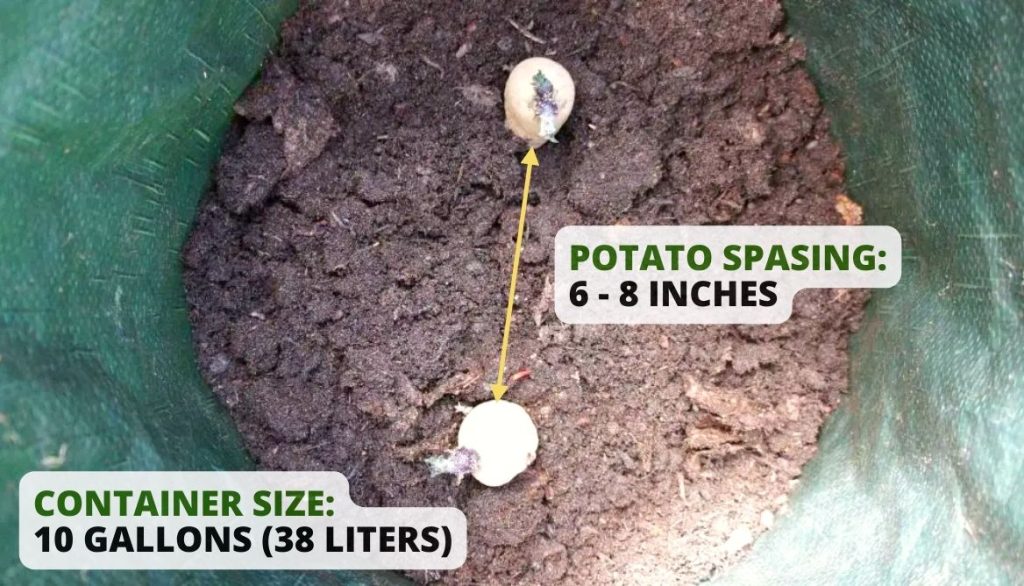
When growing potatoes in raised beds, space the potato plants approximately 10 to 12 inches. Maintain a distance of around 2 to 3 feet between the rows to allow for easy access and maintenance.
The tables below summarize the spacing recommendation explained above:
Garden Type | Row Spacing | Plant Spacing of Large Potato Kinds | Plant Spacing of Smaller Potato Kinds |
Square Foot Garden | N/A Grid Pattern | 6 inches or 15 cm distance | 6 inches or 15 cm distance |
In-Ground Gardens | 2 to 3 feet or 60 to 90 cm | 12 to 15 inches or 30 to 38 cm distance | 8 to 12 inches or 20 to 30 cm distance |
Grow Bags or Buckets | N/A | 6 to 8 inches or 15 to 20 cm distance | 6 to 8 inches or 15 to 20 cm distance |
Effects of Growing Potato Plants Too Close Together
When potato plants are grown too close together without adequate spacing, several negative effects can occur. Here are some reasons why planting potato plants too close together can be problematic:
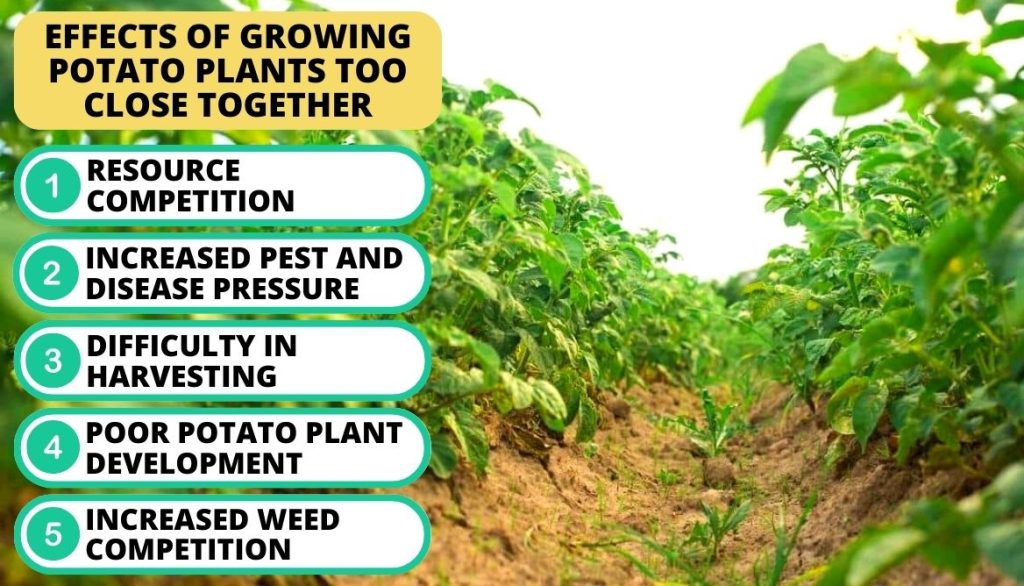
- Resource competition: The plants fight for nutrients, water, and sunlight, which results in stunted plant growth and lower yields.
- Increased pest and disease pressure: Crowded foliage attracts pests like potato beetles and facilitates their rapid spread, making control difficult. Overcrowding increases the risk of disease transmission and widespread infection.
- Difficulty in harvesting: Crowded plants make it challenging to access and harvest the tubers without damaging them.
- Poor potato plant development: Insufficient spacing limits tuber growth and produce smaller potatoes.
- Increased weed competition: Weeds thrive in the available space, competing with the potatoes for resources.
PotatoCultivation Method With Spacing
Potato planting technique with spacing involves determining the appropriate distance to maintain between individual potato plants to ensure optimal growth and yield.
Several factors should be considered when deciding on the spacing for plant potatoes, including light, water, and harvesting requirements. Let’s discuss each factor in more detail.
1. Adequate Light Exposure
Potato plants require enough sunlight for healthy baby potatoes’ growth and development. The plants must have enough room between them to receive the most light exposure. This room allows each baby potato to receive enough light without overshadowing neighboring plants.
2. Water Circulation
Seed potatoes need regular watering to ensure potatoes grow and develop tubers.
- Adequate spacing between potato vines helps to facilitate proper air circulation and reduces the risk of diseases caused by excess moisture.
- Spacing also ensures that water is evenly distributed among the new potatoes, preventing competition for resources.
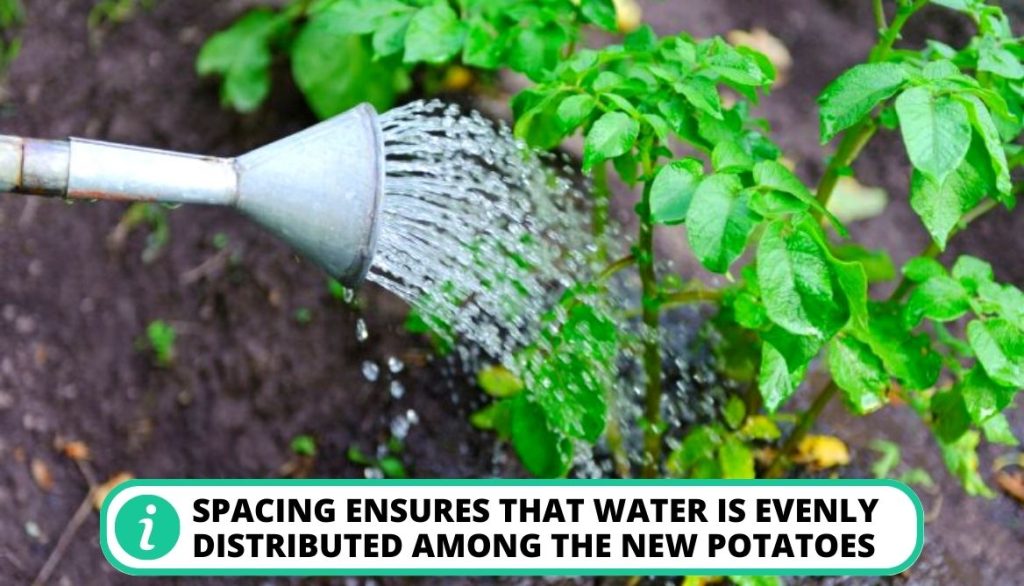
3. Potato Gathering
Adequate spacing is necessary when growing potatoes for easy and efficient harvesting of potatoes. Large space between potato plants allows easy access to the tubers without damaging them or disturbing neighboring plants.
However, you can still adjust the proper spacing if you want to harvest smaller potatoes.
4. Size of Potato Variety
The development patterns and sizes of many potato plant kinds differ:
- Smaller potatoes grow in less space between them.
- Larger potato plants grow in more space to accommodate their growth.
So, you should also consider your available resources, like how much space you have and certified seed potatoes.
5. Soil Surface
You should consider the soil’s ability to supply the potato plant with enough organic matter when deciding how far apart to place your potato plants.
- Homegrown potatoes thrive best in well-drained soil like loamy which is rich in organic matter. Plants can be placed closer together in nutrient-rich soil.
- Wider spacing is encouraged for sandy soil because it lacks organic matter and nutrients for healthy root development.
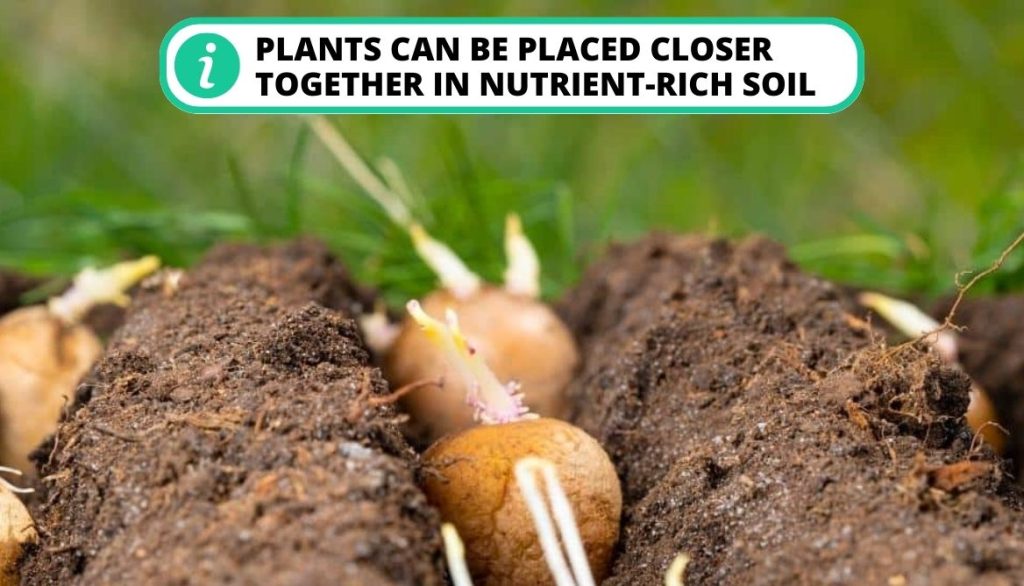
So, plants can have more room to extend their root systems in search of nutrients and moisture.
How Deep Should I Plant Potatoes?
When planting seed potatoes, the planting depth is also important as spacing requirements. This depth can differ depending on the breed of potatoes and the type of gardening method you are using.
Proper spacing and planting depth will contribute to healthier plants and higher potato yields. To grow potatoes at home, consider the following general recommendations:
- For larger varieties, growing potatoes with planting depth is usually around 4 to 6 inches of soil.
- For smaller varieties, planting seed potatoes is slightly shallower around 3 to 4 inches deep.
- For square-foot gardens and traditional gardens, the growing potatoes’ depth should generally be around 4 to 6 inches of soil.
- When growing potatoes in containers like grow bags or buckets. Start by filling the container with about 4 to 6 inches deep of good quality soil or a potting mix. Potted potatoes should have drainage holes at the bottom to allow excess water to escape.
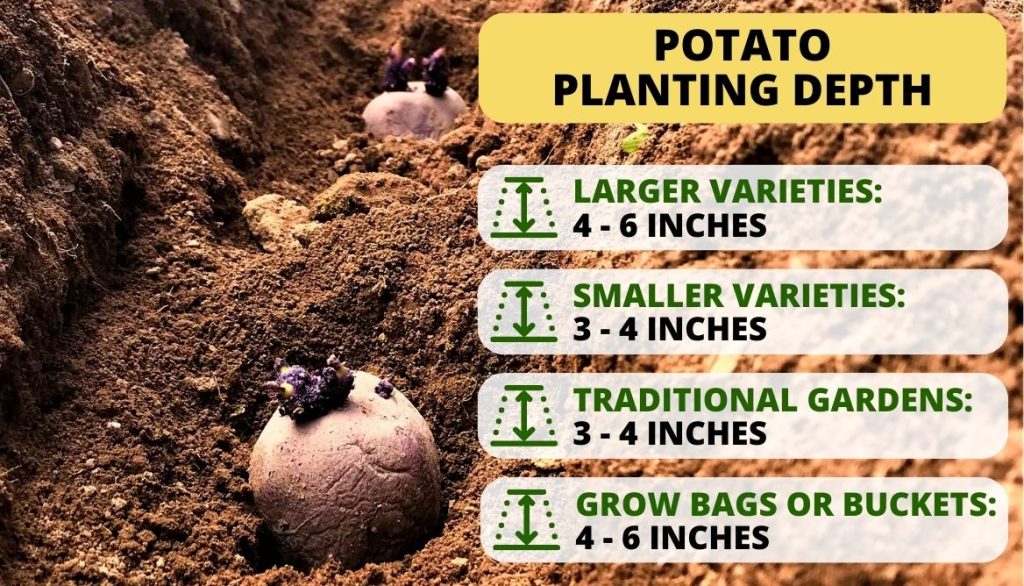
The table below summarises the explanation above:
Potatoes | Planting Depth |
In-Ground Gardens | 4-6 inches deep |
Square Foot Gardens | 4-6 inches deep |
Grow Bags or Buckets | Layering |
Soil Temperature And Its Impact On Spacing And Planting Depth Of Potatoes
This is a critical factor in the spacing and planting depth of root vegetables as potatoes. The optimal soil temperature to grow potatoes ranges between 60°F (15.5°C) and 70°F (21°C) for germination.
- Planting depth is influenced by temperature as well, with warmer soils requiring slightly shallower depths and colder soils requiring deeper planting.
- Warmer soil temperatures promote faster and more vigorous growth, allowing for slightly narrower spacing between seed potatoes. If the soil is too cold, germination may be delayed or uneven.
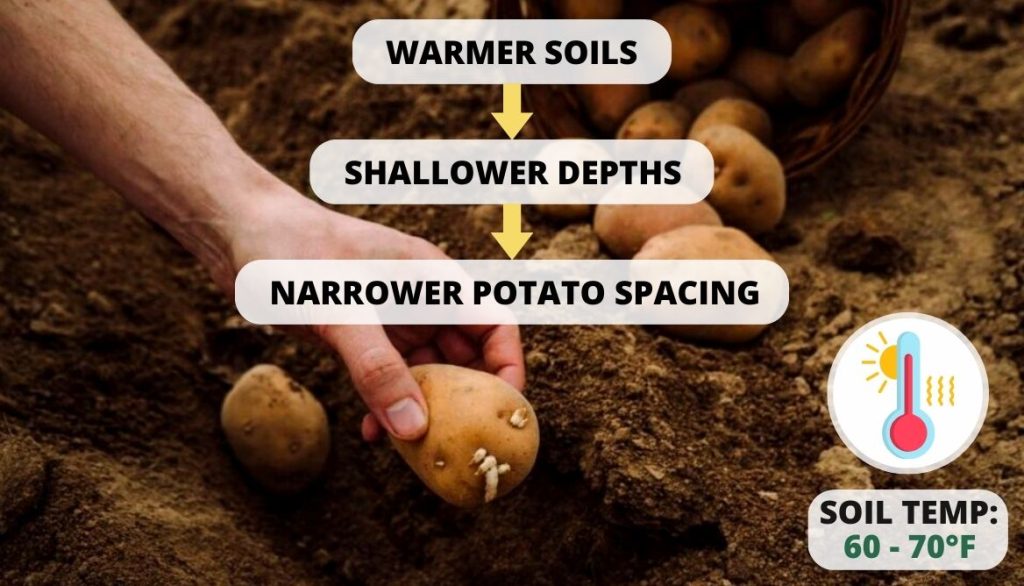
Hilling and Proper Spacing
Hilling reserved soil around the underground stems is typically done after the initial planting of potato seed.
- When you hill soil around it allows for increased spacing between the plants, providing more vertical growing space and enabling the plants to be placed farther apart.
- It also helps in preventing light exposure to emerging tubers. The hill soil adequately covers the tubers, blocking sunlight from reaching the potatoes covered and lowering the likelihood of greening and solanine formation.
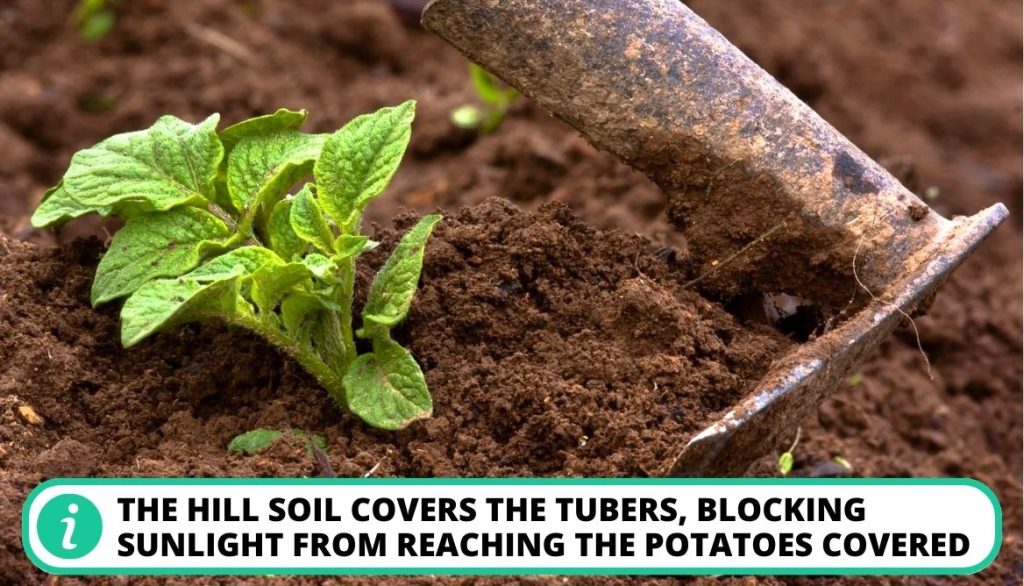
Curing and Storing New potatoes
Curing and storing potatoes properly is important to maximize their shelf life and maintain their quality. Here are some guidelines for curing and storing potatoes:
- Allow harvested potatoes to dry and cure for about two weeks in a dark, well-ventilated area with temperatures between 45°F and 60°F (7°C to 15.5°C) and humidity around 85%.
- Remove damaged, bruised, and diseased potatoes before storage. Discard any potatoes with signs of forming potatoes sprout eyes.
- Choose a cool, dark, and well-ventilated storage location with temperatures between 35°F and 40°F (1.5°C to 4.5°C). Don’t store potatoes near fruits that release ethylene gas.
- Use containers like wooden crates, mesh bags, or paper sacks that allow for air circulation.
FAQ
What is the spacing for potatoes?
The spacing for seed potatoes typically depends on the variety being grown and the available resources. In general, a spacing of 12 to 15 inches between each potato plant is recommended.
How long do potatoes take to grow?
The time it takes for potatoes to grow varies depending on several factors, including the potato variety, growing conditions, and desired harvest. Early seed potato varieties like Yukon Gold and Kennebec may reach maturity in as little as 70 days, while maincrop varieties may require 90 to 120 days or more.
What is the effect of spacing on potatoes?
Adequate spacing of seed potatoes ensures that each plant has enough room to develop a strong root system and access to sunlight and air circulation. It also helps to prevent the spread of diseases and pests by allowing better airflow around the potato patch.
What affects potato size?
Factors such as variety, spacing, nutrient availability, temperature, soil quality, sunlight exposure, and disease or pest pressure can all impact potato size. Optimal growing conditions contribute to larger and healthier potato tubers.
Conclusion
Several factors should be considered when deciding on the spacing to plant potatoes such as light, water circulation, variety, gardening methods, etc. It’s important to understand the appropriate spacing and planting depth for potatoes is crucial for successful cultivation.
By implementing the proper techniques and guidelines for planting potatoes, your potatoes grow well, yields more, and minimize the risk of various issues associated with improper spacing.
What are some challenges you have faced when planting potatoes in your garden? Let’s know in the comments section. Thanks for reading!
- How to Get Potatoes to Sprout Eyes: Detailed Growing Guide with 3 Options - July 31, 2023
- Weight of a Medium Potato: Revealed in Detailed Guide - July 29, 2023
- Maris Piper Potatoes: 9 Substitutes You Should Know About - July 27, 2023
Hello! I’m Jessica Zander, a garden coach and consultant based in the Boston area (zone 6b), offering virtual consultations across the country and Canada.
I’ve been passionate about gardening since the early 1990s, and in 2022, I launched You Can Do It Gardening to empower individuals to feel more confident in their gardening endeavors.
Following a 30-year career in nonprofit finance and operations, I transitioned out of that field in mid-June of 2023 due to the growing demand for coaching services. Interestingly, my years of presenting financial statements to boards and finance committees proved to be valuable experience for teaching people about gardening! I enjoy sharing skills, providing guidance and suggestions, and collaborating efficiently with clients to make significant improvements to their outdoor spaces, both small and large. I also regularly teach at the Arlington Continuing Education and Cambridge Adult Education.
My approach is direct and practical, akin to Mary Poppins, but tailored to your garden. Clients find satisfaction in saving money and taking pride in their own gardening achievements.

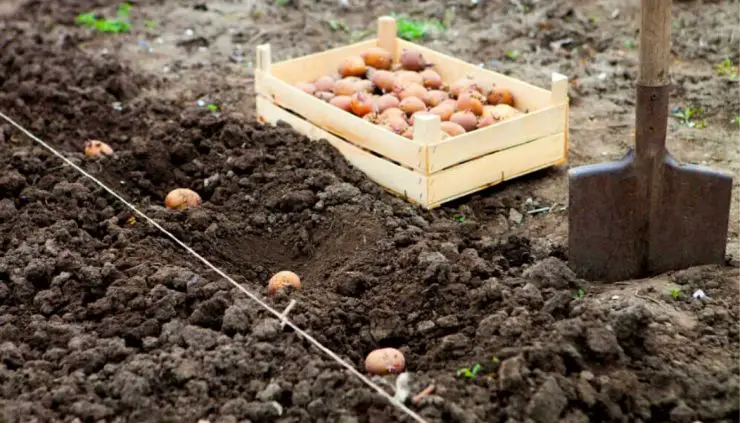

Add comment